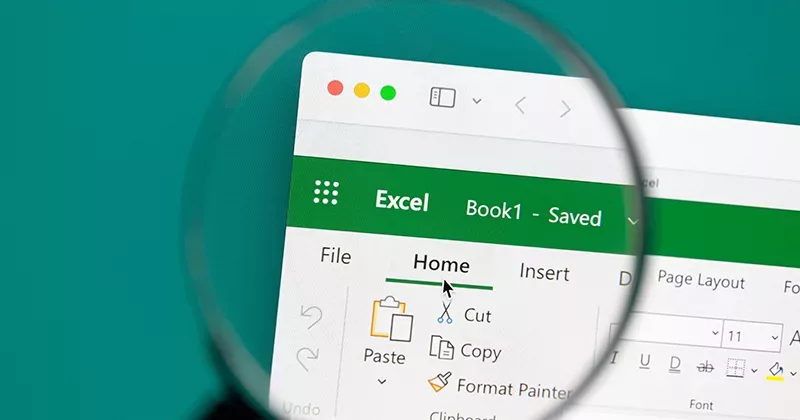24 mins read
Exploring The Top 14 Benefits Of Construction Software

Accelerating digitization is one of the leading construction trends of the moment, urging companies in the industry to find the best software solutions to support their digital transformation and stay ahead of their competitors.
While they may initially consider investing in generic software that spans multiple industries, this type of solution will not address the construction industry’s many unique aspects, such as using various subcontractors.
In this respect, project managers and construction companies should look for best-of-breed construction software solutions that embrace the industry’s nuances. Their chosen software should be backed up with excellent implementation, training, and support specialized for the build environment.
To help you make the best decision for your organization, we’ve compiled this guide exploring the top benefits of construction software. Keep reading to understand the value of industry-specific solutions and some tips for picking the best one for your goals.
Top 14 Benefits Of Construction Management Software
The top construction businesses worldwide have already embraced the value of professional construction software solutions to maximize their profitability and efficiency.
Still, many organizations are nervous about transitioning to a digital environment. This is usually because they are unaware of the huge benefits they can reap from their software investment. Keep reading to learn some of these benefits!

1) Efficient Cost Projection
Successfully delivering construction projects within the critical factors of time and budget relies heavily on efficient construction cost control and performance management.
The first benefit of construction cost management software, such as RIB BuildSmart, is its ability to forecast costs throughout a project’s lifecycle. The best way to project costs is to get an accurate view of how much has been spent to date and how much will be spent going forward. This is difficult to achieve without software because of the enormous amount of data that needs to be processed and the numerous moving parts that make up a project. Software that does this in real-time is the most effective because it allows costs to be recorded as soon as they happen, eliminating the need to wait for an actual invoice to be delivered for the cost to be recognized.
With the right software, construction companies can track costs against the initial budget, prevent overruns, and prepare for them beforehand.
2) Management of Subcontractors
Subcontractors are playing an increasingly prominent role in construction projects, with lead contractors adopting more of a project management role. Good construction software offers a range of tools for subcontractor management, including tenders, quotes, job allocation, and full invoicing (factoring in the specific requirements of milestone reporting, completion certificates, and payments/invoicing). This not only makes managing all aspects of subcontracting easier by centralizing all data and processes but also boosts efficient communication and better relationships with the different subcontractors involved in the project.
3) Cost Value Reconciliation
One of the benefits of construction software is that it mitigates risk and manages both cost and time by intuitively constructing valuations and cost reports relevant to the cost value reconciliation (CVR) process. Monitoring and measuring actual expenditure against budgeted and forecasted project expenditure provides a running account of the project’s profitability by comparing cost and value throughout the entire project lifecycle.
4) Simplified Reporting
For decades, having a single source of truth for all project data has been challenging in the construction industry. Before digital construction was even a thing, project stakeholders generated written reports that had to be sent to the rest of the team via email, making it impossible to collaborate and significantly increasing the risk of errors or misunderstandings.
Luckily, in the age of the cloud, construction reporting has become a more interactive, accessible, and efficient practice. Modern software offers construction companies an online environment to access real-time progress data to support the project’s most critical strategic decisions. The cloud’s online nature allows every professional involved in the project to access the reports with the latest data from anywhere, making it easy to keep everyone connected through a single source of truth. This is definitely one of the most significant benefits of construction project management software.
5) Financial Operations (FinOps) Management
Effective software ensures that business intelligence is fully current and available for reporting on all operational and financial aspects at a company and project level. This is critical in today’s modern business environment, where management needs to appraise the status at any given time. It also allows companies to manage and adapt effectively to obstacles and challenges without unexpected surprises.
6) Plant Management
Getting the most effective use of resources, whether rented or owned, is essential for cost efficiency. Not many Enterprise Resource Planning (ERP) systems incorporate a purpose-built plant module to manage construction equipment and small tools. Industry-specific tools are needed to deal with industry-specific nuances; for example, a project manager has two choices in the construction industry: hire from a third party or use internal resources. This requires considering cost and availability.
Professional construction software creates the environment for effective decision-making, allowing the project manager to factor in trade-offs, conduct analysis, and determine the best option.
Ultimately, a complete plant management system enables project managers to know exactly when equipment is available — especially if multiple projects are on the go — and how it can be allocated more effectively. All equipment can be tracked and reported by resource type, current location, and cost (charge rate) to plan and forecast its best utilization.
7) Improved Bidding Process
Another benefit of these solutions is that they simplify and improve the bidding process through automation and BIM technologies. Modern bid management software provides an all-in-one environment for accurate quantity takeoff and cost estimation that takes significantly less time than doing it manually. Plus, manually calculating and measuring quantities from drawings is highly subject to error and can damage your chances of gaining new projects.
Additionally, these solutions will update project takeoffs and estimations based on design changes and leave a trail of who made the changes to ensure transparency and accountability.
8) Document Management
Professional document management software, such as RIB Project, records document revisions, check-outs, and check-ins while keeping track of ‘unpublished’ versions. This prevents amended or revised documents from being available or visible until approved, as well as being able to track who has read any revisions that have been released.
The system also ensures all documents are correctly filed in the appropriate locations and can be accessed, grouped, or sorted by department, project, area, or any other relevant criteria.
An excellent example of this is managing design changes. Project managers often receive numerous revisions to a design. The trick is effectively managing the document flow from the architect to the engineer and then the contractor. Usually, these are complex drawings, and it can take time to see exactly what the change is. The right software manages the flow of documentation and allows everyone to understand the drawings.
Notably, document management tools boost collaboration on projects. This is important in an industry often characterized by a lack of cooperation. With multiple stakeholders on a project, adopting document management and collaboration tools is critical for effectively sharing information and ensuring project efficiency. To overcome the issue of who sees what information and data, software tools can pre-define every stakeholder’s role and what information they can access.
9) Enhanced Collaboration
If you’ve ever read one of our blogs, you know how important we think collaboration is in construction. In the age of digitalization, if you don’t support your collaboration efforts with the right software, you will not be able to extract the potential behind efficient teamwork. Modern construction collaboration solutions provide a centralized environment for all project data, documents, meetings, design changes, models, drawings, and more. For example, team members can look into the project calendar to understand which tasks must be completed, for when, and with whom. If any doubts or issues arise, they can be confident that the latest information is available and no misunderstandings will happen.
This benefit is significant for large, complex projects where team members can be located across different cities or even countries and can genuinely benefit from real-time collaboration. Professional software, such as RIB Candy, offers powerful features that can be used in a single interface to eliminate departmental silos and boost collaboration.
10) Remote Access and Updating
The advent of 5G and modern cloud-based software services enables people to access, capture, and process information anywhere and anytime. This can be as simple as updating contacts or as complex as updating progress, variations, or delays from the field as they happen.
The integration of remote access has revolutionized project management in construction. Through these capabilities, construction teams can streamline communication, enhance collaboration, and ensure real-time tracking of project developments.
Remote access allows stakeholders, including architects, engineers, project managers, and on-site workers, to collaborate seamlessly regardless of their physical location. With construction software accessible through the cloud, team members can view project plans, submit updates, and communicate in real time. This level of connectivity fosters smoother coordination among team members, reducing misunderstandings and delays.
In addition, enabling remote access and updating with the help of software eliminates the need for manual data entry and paper-based documentation. Workers can input information directly into the digital platform from the field, reducing the risk of errors and enhancing data accuracy. Moreover, the automation of routine tasks, such as generating reports or tracking project milestones, frees up valuable time for project teams to focus on critical activities, ultimately improving overall efficiency.
11) Increased Productivity
Another important benefit of investing in these solutions is increased construction productivity. This is a consequence of all the other benefits and functionalities we already discussed on this list, as having a centralized location for efficient project management, collaboration and communication will automatically make everyone’s work more efficient and productive.
From the project manager’s side, construction software also helps track and optimize productivity. Solutions like RIB BI+ offer interactive dashboard reporting where the PM can track productivity KPIs and define strategies to improve underperforming areas or teams.
12) Compliance and Governance
Number twelve of our construction software benefits list is that these solutions enable compliance with tax regulations and IFRS accounting standards. Construction software, combined with technological advances and the Internet of Things (IoT), can help ensure compliance with aspects of the construction process, such as safety behavior, which can be monitored by placing cameras at turnstiles to check that every employee has the correct safety gear and tools.
From a governance perspective, these solutions can help meet internal policies and procedures, such as ensuring that procurement only uses select suppliers loaded into the accounting and procurement system and buying against budgeted quantity, rate, and value for all resources.
By embracing digitization and investing in software that offers these compelling benefits, construction companies will be better placed to reduce risk, streamline processes, improve efficiencies, and increase profitability.
13) Architectural Engineering & Construction – Professional Services
Accurate costing and charging out is essential for any business that employs professionals who charge by time. Construction Software tracks these costs and charges in real-time, and the Project/Cost ledger will be updated automatically. This makes tracking costs easier and improves relationships with these professionals by paying them on time and the corresponding amount.
14) Complete Integration
Last but not least, complete integration is another of the main benefits of construction management software. This means that if you already work with other systems, like an accounting platform or internal HR or IT systems, and need to transfer data into your construction platform, you can do so swiftly. This is a key part of having all your project information in a single place, and it’s a benefit that should not be overlooked.
How To Choose The Best Construction Management Software
Now that you have a clearer understanding of the key construction management software benefits, you can start thinking about investing in one. But with so many offers out there, how do you make sure you choose the right one? The tips below will help you!
- Define goals and budget
The first thing you should do before even starting to research is to define your goals and needs. What needs will the software cover? Who will use it? What is our budget? Are we looking for a specific feature or technology?
Outlining all this information beforehand will make your search more intelligent and efficient and prevent you from investing in a solution not tailored to your specific needs.
- Look for ease of use
While it might sound unimportant, picking user-friendly and easy-to-use software should be a top priority. Construction projects are complex enough on their own, and the tools you use to support them should not make things more challenging. This is not to say that you should pick a basic tool. On the contrary, the best software will provide advanced functionalities in an intuitive interface that everyone can manage.
- Go green!
The construction industry is becoming increasingly greener. Every day, more and more companies realize the environmental impact of their projects and want to implement measures to minimize it. Whether it is because of genuine care for the planet or because regulations are becoming more strict about sustainable construction practices, the topic is unavoidable. Therefore, the platform you decide to invest in should provide you with features to track your embodied carbon emissions and ways to decrease them.
For instance, RIB 4.0 offers 6D BIM technology to analyze and manage the sustainable impact of construction projects. The tool provides a built-in object library with over 100 carbon and Environmental Product Declaration (EPD) data sources from Europe, North America, Asia Pacific, and other countries to help avoid waste and increased carbon emissions throughout the project’s entire lifecycle.
- Excellent support
A critical aspect to consider is the industry expertise of the software provider’s team members. Are they mere techies, or are they people who have come out of the industry and can apply their industry knowledge to help construction companies embed best practices into their operations?
Not just that, paired with having qualified professionals to support your company in different scenarios, the tool you decide to invest in should also provide you with intuitive, interactive support documentation. While these solutions make your life easier, they have a learning curve, and having the proper support available at all times can make a difference in how much value you can get from the software.
- Flexible and scalable
There are many software providers out there that charge differently for their solutions. We recommend you stick to a tool that offers flexibility and scalability regarding pricing. This means it allows you to pay only for the features you need instead of overcharging you with packages you will only partially benefit from. Plus, the software should allow you to grow as your company grows.
Who Can Benefit From Construction Software
At the cutting edge of technology, Integrated management software provides contractors with an incredibly comprehensive and effective toolbox that they could only think of as pipe dreams in the past.
One of the best ways to distinguish between the software offerings in the market is to consider their ability to provide truly end-to-end construction project management. This might include such functions as variations and change order management, flagging of exception conditions, up-to-the-minute business intelligence with reports and data, modification capabilities for both prime and subcontracts, identifying budget concerns (over and under budget) by examining actual costs and predicted costs and so much more.
Considering how these features would benefit the various stakeholders, we should think holistically and beyond our teams and departments. So, who will reap the benefits offered by construction software?
- The Project Owner
This is usually the entity that has financed or sponsored the project. This person wants to know the real-time and overall costs versus the scheduled budget. Construction software is renowned for its accuracy and complete and up-to-date reporting, which will give great confidence and comfort to the owner, unlike bespoke spreadsheets or autonomous reports. Knowing that the updates being received are generated by a reliable end-to-end function of integrated software that considers all elements of the project deliverables and finances ensures the owner gets the genuine and unadulterated truth.
- The General Contractor
The general contractor (GC), appointed as the primary contractor responsible for subcontractor management and, sometimes, for the overall project management, will be accountable to the owner for delivering the project on time and within budget. The general contractor usually employs specialist sub-contractors to complete certain specialized trades or elements of the contract. The benefit of the integrated reports to the owner has been covered above, but the same information is also critical for the GC. Spotting potential issues early and making the proper and timely adjustments will assist them in staying on track. The ability to track and manage the sub-contract bids, progress, valuations, and payments, record daily transactions between stakeholders, and assist in highlighting possible constraints between the parties and timeous completion of the works is one of the many elements that early adopters of this system rave about.
- The Subcontractors
Having won the bid and been appointed to carry out the defined scope of work, access to the reporting and operational elements of the integrated system vastly simplifies their responsibilities over and above the physical work itself. Many of the payment triggers will be based on measured works or milestones. The integrated system will monitor and prompt to ensure that the work is completed smoothly and that all invoices, receipts, and certificates are processed without any timely delays.
- What About a Bank or Finance Company
In much the same way as an owner, if a bank or financial institution is financing a project, they want to be sure their investment is safe and sound. Many financial arrangements of this type will also have a phased release of funds triggered by measured works or milestones. As with reporting to an owner, the integrated true and accurate data and reports are infinitely more reliable than ad hoc project updates. Various access or information reporting levels can be agreed upon and set up from the outset or adapted on the go. This can be a key selling point during the negotiation phases in securing financial support from premium institutions, as this greatly assists with their initial and ongoing due diligence.
Conclusion
Construction software’s capabilities and effectiveness have evolved massively in a short period of time, and the most reputable and trusted providers continue to upgrade and enhance their product offerings to stay ahead of competitors.
In this fast-paced, demanding industry, choosing the right software can be vital in winning and managing projects. Even in this short article, the benefits can clearly be seen. It can even impact a wider audience in terms of financiers and investors concerned with getting new projects off the ground.
Are you ready to benefit from modern construction software solutions that save resources, reduce costs, and support sustainability? Book your personal RIB product demo today!
Most Recent
24 mins read
11 mins read
11 mins read
4 mins read
Blog Categories

Ebook











